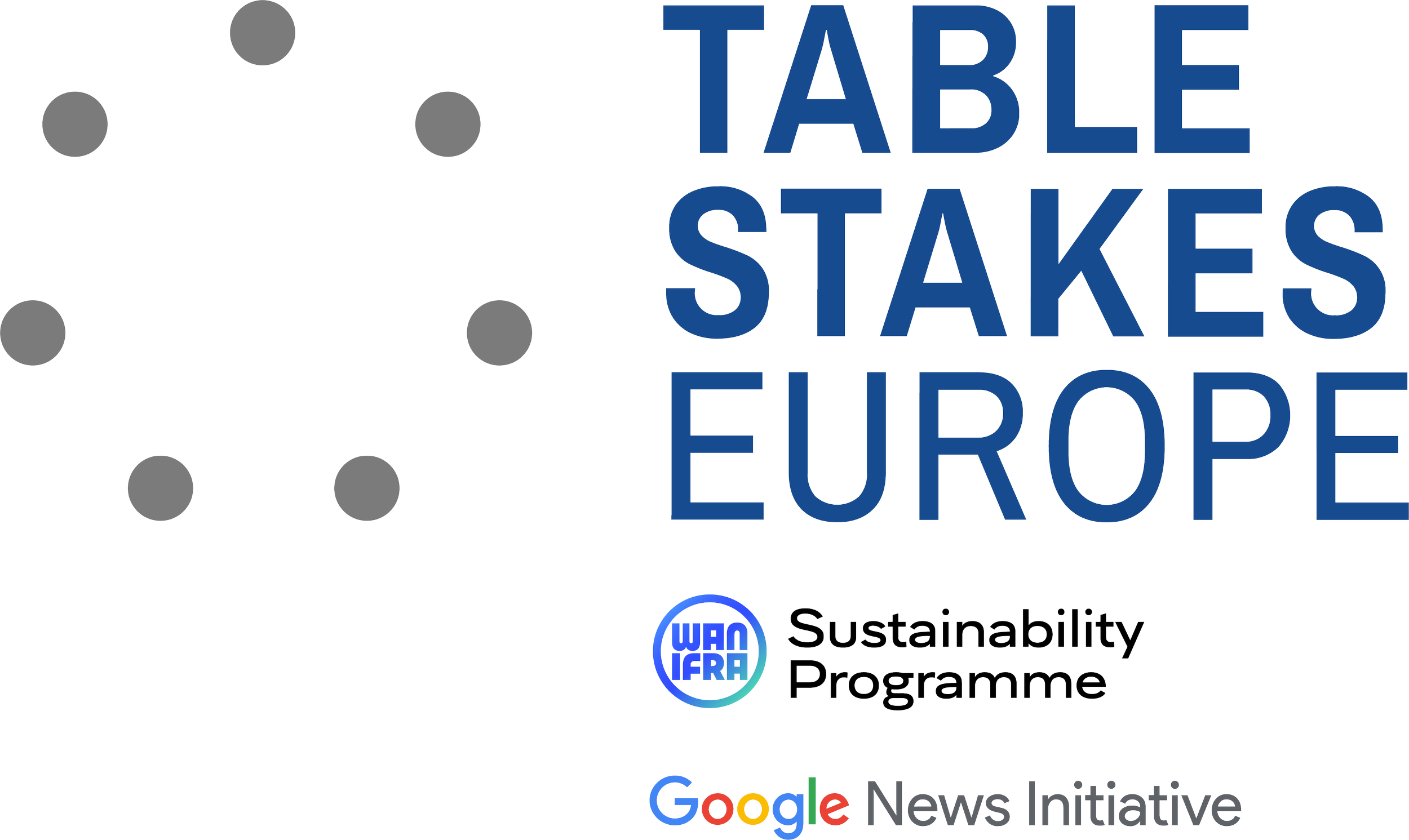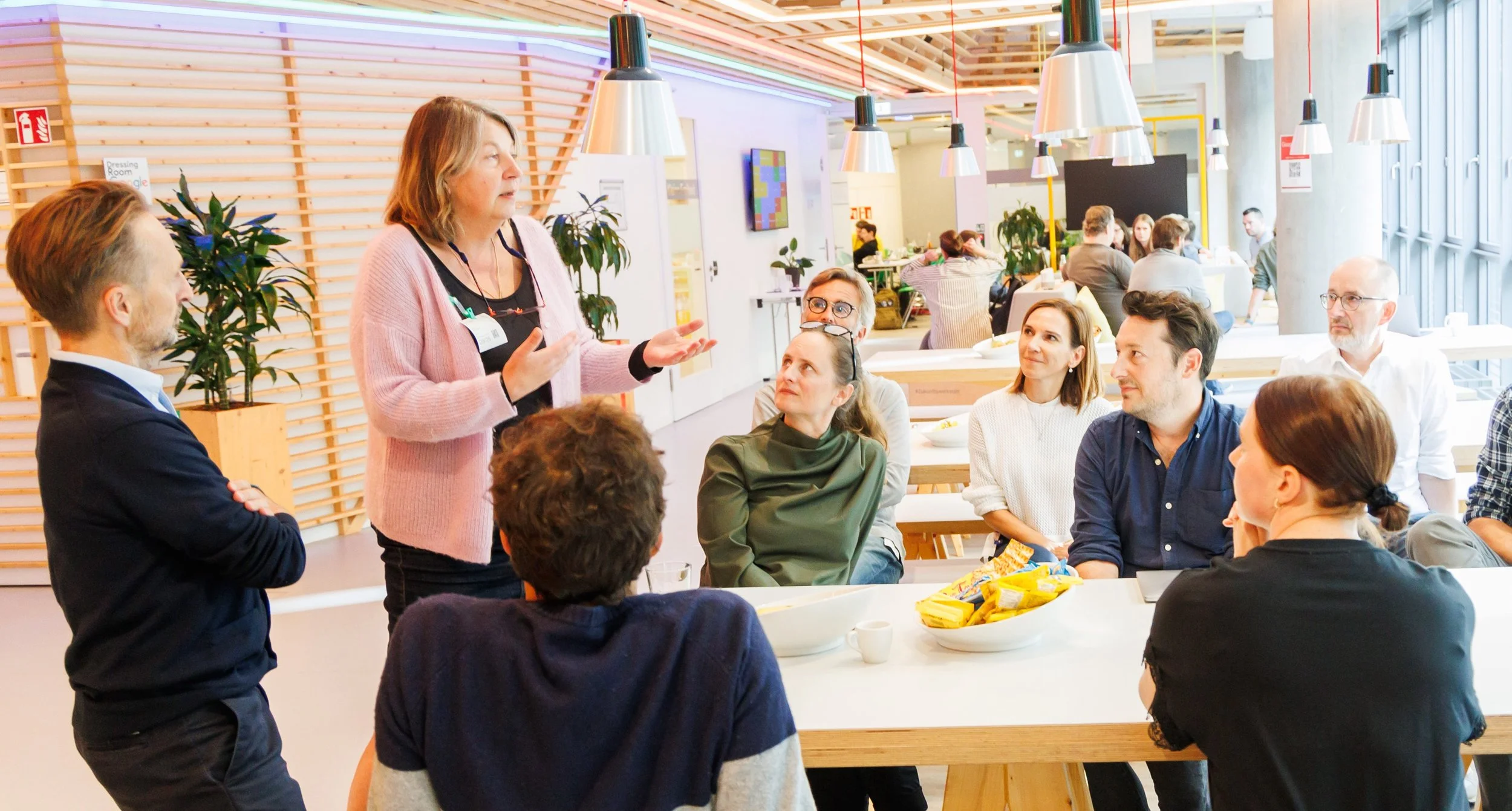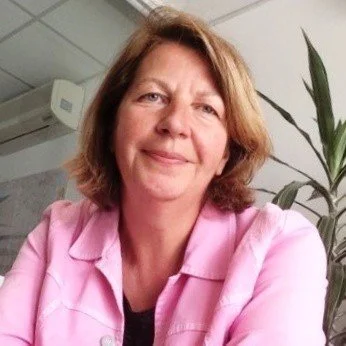‘Everyone has the power to contribute to success’: Lessons from five years of helping publishers become digital and audiences-first
The pace of change in the digital journalism landscape continues to accelerate, and publishers are under increasing pressure to reassess both their business and operating models. Since its launch in 2019, Table Stakes Europe has played an important role in helping European news publishers as they navigate this uncertain territory.
If you need a reminder of how quickly things change in the news media industry, consider the reality for most publishers just five years ago.
News sites could still count on social media platforms to drive a significant portion of their traffic. The whirlwind that was the Covid era was yet to come. And AI was, of course, only an emerging topic.
A lot can happen in a few years – and the speed of change is quickening.
Back in 2019, when the first participants began their Table Stakes Europe (TSE) journeys, publishers knew they needed to adapt quickly to the changing news consumption habits of their audiences. Since then, the need to experiment, learn and adapt has only become more important.
To find out more about how TSE helps publishers overcome these challenges, we spoke to two TSE coaches, Valérie Arnould and Martin Fröhlich. Arnould is Deputy Director, Digital Revenue Network at WAN-IFRA, and has been involved in the TSE programme since its inception. Fröhlich, Director, Digital Revenue Network at WAN-IFRA, joined the programme as a coach in 2023.
From the beginning, TSE has supported almost 100 organisations, from 20 countries, including more than 400 individual participants – providing a broad cross-section of the issues facing European publishers today.
The following conversation draws on this wealth of experience, highlighting how TSE has not only guided publishers through the complexities of digital transformation but also empowered them to overcome internal resistance, improve collaboration and drive sustainable success.
Based on your experience with TSE, what do you see as the main benefits for publishers participating in the programme?
Valerie Arnould: The main benefits come quickly from working with colleagues from different parts of the business and gaining a better understanding of the issues they each face. What's more, the teams are guided by Table Stakes' questions and tools, which help them understand where to focus their efforts and how they can individually contribute to the success of their company. If there's one thing that's important, it's probably the revelation that everyone has the power to contribute to success. They also learn how to move forward more quickly and “navigate” resistance that may exist at all levels of their organisation.
In addition, the programme refocuses them on the issues that are vital when working in a digital environment: always considering the different audiences they serve, the best ways to engage and retain them, as well as how to monetise their initiatives and set targets to measure their success. While this may not be a discovery for most people, many still address these issues in a disjointed manner rather than adopting a holistic approach that considers all aspects of digital strategy.
Martin Fröhlich: I see two major benefits: First of all, they see that it can be done. Digital transformation is possible, digital success is possible, a thorough change of attitude in a newsroom is possible. They see that in the other teams, in alumni cases and in their own teams. The other benefit relates to what Valerie said: They work on a specific project and learn which steps have to be taken to make progress with it.
“They see that it can be done. Digital transformation is possible, digital success is possible, a thorough change of attitude in a newsroom is possible.”
Martin, before joining WAN-IFRA and Table Stakes Europe, you worked for 25 years at newspapers and were also a participant on a TSE team. How has your newsroom background helped you as a TSE coach?
Fröhlich: Generally, I came with three lessons in my bag that I had learned in my digital transformation projects. The first one is that change and transformation in your working area scare a lot of people. That is a fact and should not be ignored. So you must explain to them what you change and why, and what the big picture is. And explain it over and over again. Because scared people will not follow your way with passion.
The second one is that you need to answer their concerns and that it helps when you can show them practical examples of how you solved problems instead of only discussing theoretical concepts. And the third lesson that helps me a lot is my experience with a positive failure culture. Instead of criticising, it’s better to encourage people to try again and to appreciate the lessons learned from a mistake, rather than complaining about the error.
In TSE, we encourage journalists to adopt a business mindset, and business people to see things from a journalist’s perspective. Can you talk about this shift in mentality and what challenges it presents?
Arnould: I have the feeling that editorial is still unfamiliar territory for business departments. Table Stakes is a program that emphasises the crucial role of the newsroom and quality journalism in serving readers. As our head coach Doug Smith says, "Newsroom is the business."
Historically, the goals of journalists and commercial teams have often been at odds, with one being favoured over the other depending on the economic cycle – whether advertising was dominant or when reader revenue took precedence. It's time to break down this barrier and foster better communication while respecting each other's missions. And that's a company-wide challenge, not just within Table Stakes teams.
Fröhlich: A very precise description. I would add that it also tends to be hard for journalists to adopt the business mindset. This comes from their general understanding of independence. For a long time, the financial part of news publishing was something that somebody else was responsible for. The idea was that journalists should not be influenced by financial needs in order to be as unbiased as possible. Now we see that you can be unbiased and still have the “newsroom is the business” idea in your head.
Valerie, you have been a TSE coach since the programme started five years ago. Have the teams’ challenges changed during that time? What has been the biggest change?
Arnould: It seems to me that the teams have become more precise in identifying their digital challenges and more aware of the need to create working models that can be deployed across the entire company so that together they can move faster. The task is not an easy one, however, and many teams have asked to take part in the programme for a second year.
I would say that when teams join TSE today, their projects are less seen as isolated experiments and more as a way to accelerate their overall digital growth. This has always been the aim of the programme.
Is there a particular aspect of TSE that you find resonates with the teams year after year?
Arnould: It's likely the freedom they feel in being able to quickly experiment, evaluate, modify, and learn. This contrasts with often lengthy planning processes and the self-limiting belief that you can't get started unless all the conditions are perfect for testing something. Of course you can!
There is also the recurring awareness for every team, regardless of the year, that they need to evaluate what they should stop doing (or do differently). This is necessary to free up time and resources for what is important and strategic, as the benefit-to-cost ratio for some long-standing activities is completely unbalanced.
“The community effect is essential. They see that other publishers from different countries and of various sizes are facing similar challenges and problems.”
Fröhlich: The community effect is also essential. They see that other publishers from different countries and of various sizes are facing similar challenges and problems. That works first as a quantum of solace and later as a motivating boost.
This year’s edition of TSE has many teams that have already been through the TSE journey in the past. Why do you think many teams want to come back to TSE after their first round?
Fröhlich: One reason might be a lack of self-confidence, which I completely understand. Although most of them have had successes in the first year, they are not sure they can keep it going without the program. Or they bring in new departments of their newsrooms, bigger groups, and want them to learn the concept from zero.
Arnould: There is also incredible stimulation in sharing the Table Stakes year with the other international teams. People support each other in their efforts and help whenever they can. And as Matin said, in the second year it's often different people from the company who join those who have already gone through the program.
Is there a specific advantage to going through the programme twice?
Arnould: For some, it's primarily about onboarding more people using a shared methodology that has proven effective for them. For others, it's tied to a specific project (such as launching a new product, platform, organisation, etc.) and they believe they have a better chance of success with this support.
Fröhlich: Teams can also often get to action faster in the second year as they already understand how to build a challenge and start working on it.
There’s currently much concern about AI’s future impact on the news industry. Does TSE help publishers make sense of the opportunities and threats of this technology?
Arnould: Teams in TSE discuss and share a lot about AI, including its possibilities and their internal guidelines for using it. It's all evolving very fast, and we’re all learning from one another. We try to approach these topics with an open mind, focusing on how we can best utilise AI to help achieve our objectives: producing quality journalism that meets audiences’ needs and grows digital revenue.
Fröhlich: There’s also an additional aspect: in the end, AI is also a tool, and learning to use it is a challenge. So why not use the TSE methodology to develop your AI skills and create the right attitude in the newsroom? And to discuss the business opportunities that come from it.
Many TSE participants want to understand their audiences better by making a better use of their data. But many teams seem to find this challenging. Do you have any advice on how to use audience data effectively?
Arnould: The amount of data we have access to in the digital world is a real treasure trove for monitoring our editorial and business activities. However, it’s counterproductive to overwhelm people with complex dashboards. At each stage of the digital strategy, specific indicators are useful for making progress. These indicators are not always the same for everyone in the company and will change as you advance.
What is crucial is to provide everyone with the indicators that are most useful for the strategic stage you want to reach and to clearly explain why these indicators are important and how to interpret them. This last point is more complicated than it seems because it can require efforts from the data specialists to communicate effectively with the less data-savvy people within the company.
The media environment is evolving rapidly, and will seemingly continue to do so. As the saying goes: “The only constant is change.” If this is the case, how can TSE prepare publishers for constant change?
Fröhlich: Let me go back in time: For decades, newsrooms were dominated by some iron rules. Generations of journalists passed them on to the next ones. Certain things seemed unalterable. Even when the accelerating process of technical progress started in the 80s and 90s, many rules and principles were untouchable.
“The only way to keep up is to scrutinise your strategies and processes constantly.”
Today, the environment and the markets are constantly changing. As is the business model. The only way to keep up is to scrutinise your strategies and processes constantly. It’s a hard lesson but necessary. Once you have learned it, it will become easier and easier. That is exactly what you learn in TSE.
In TSE we use the word “coach” – and not “consultant.” What is the main difference?
Arnould: Ultimately, what we really want with TSE, is for people to have the framework to design and execute the strategy, that as many people as possible can start thinking as a “publisher” about the different aspects of what they do. That they don’t fall back in a routine but keep innovating – this is so crucial in the digital environment.
Consulting can help solve a specific aspect, and recommend solutions. As coaches we think that the teams often already have the solutions, they have expertise, and if not they are smart enough to go and find it. Our role is to awaken them to this power they already have and make it shine long after they’re out of the program.
What has coaching taught you?
Fröhlich: That everyone needs a coach from time to time. Even the coaches. Or in other words – never believe that you know everything and have seen everything. You have not!
Arnould: To celebrate every achievement, to listen and also pay special attention to those who are more quiet during our weekly meetings, to recognise that there are solutions even when the team faces tough questions and may feel stuck.
What is the most challenging part of coaching?
Fröhlich: It might sound a bit strange, but sometimes it is hard to just accept that you cannot do the project yourself. You are the coach and not the one taking the action. I understand now how football managers or tennis coaches feel. You cannot step on the court and play yourself, even if you sometimes want to. You have to guide your players to success.
Arnould: Probably to maintain enthusiasm and commitment for nearly a year, knowing that even though their TSE project is significant for the teams, events in the life of their companies can demotivate them or disrupt their priorities.
And the most fun part?
Fröhlich: For me it’s when they surprise me. I remember a case with a team that was really desperate at the beginning of the programme and thought about quitting. Of course, I had my doubts then. In the end, they turned out to be one of the best performing crews.
Arnould: When they realise they’ve done a great job! Often this happens during our various presentation updates in front of the other teams, with the coaches and the other teams applauding. You can almost see it in their eyes: “Oh wow, we’ve achieved all that!”



